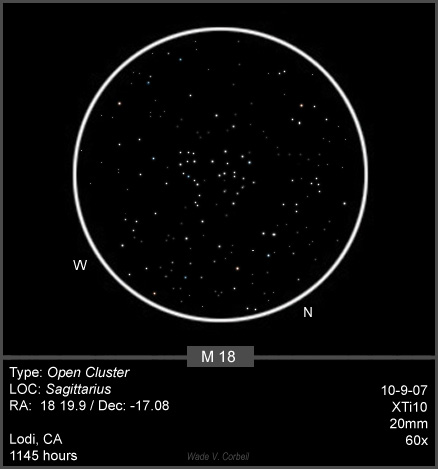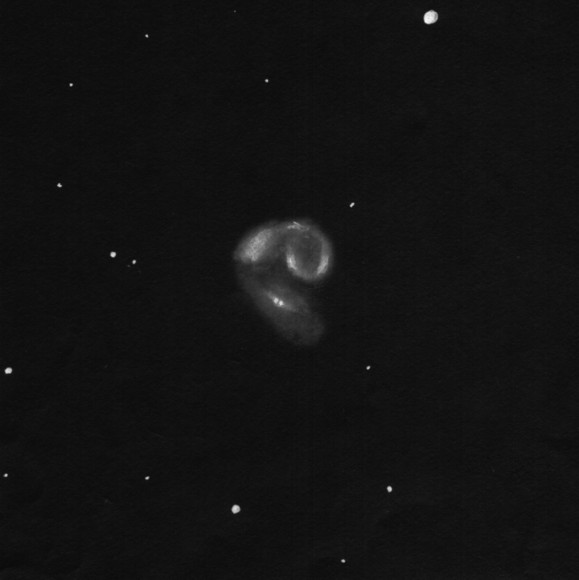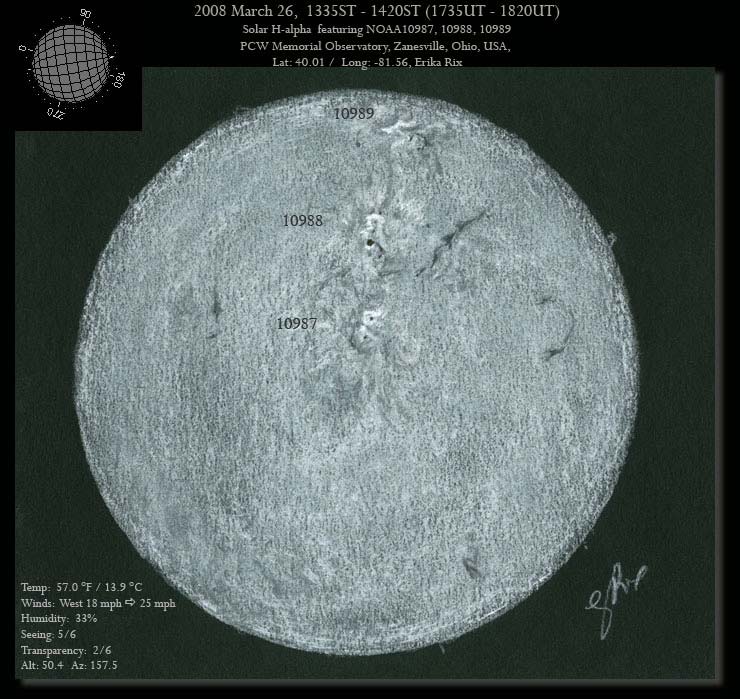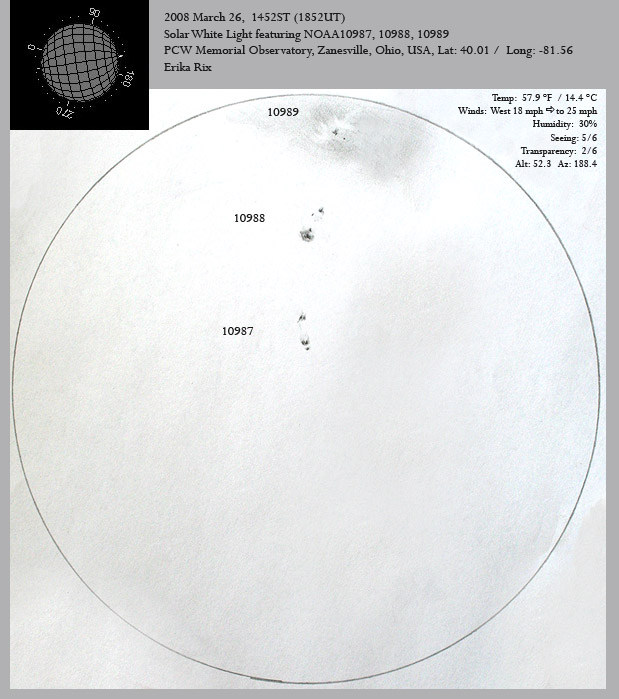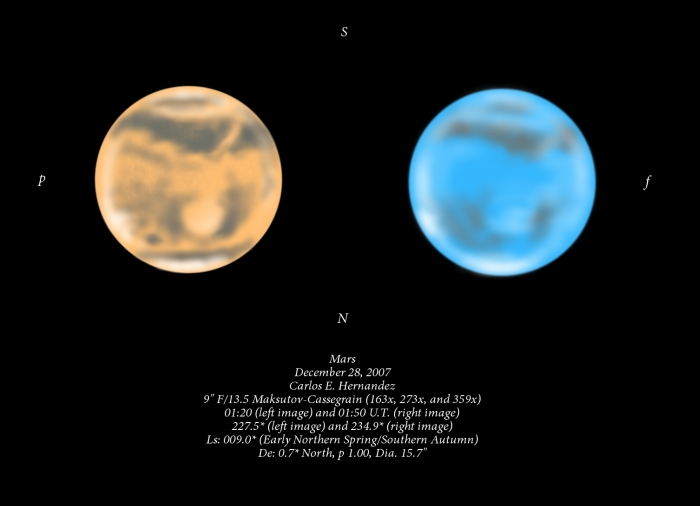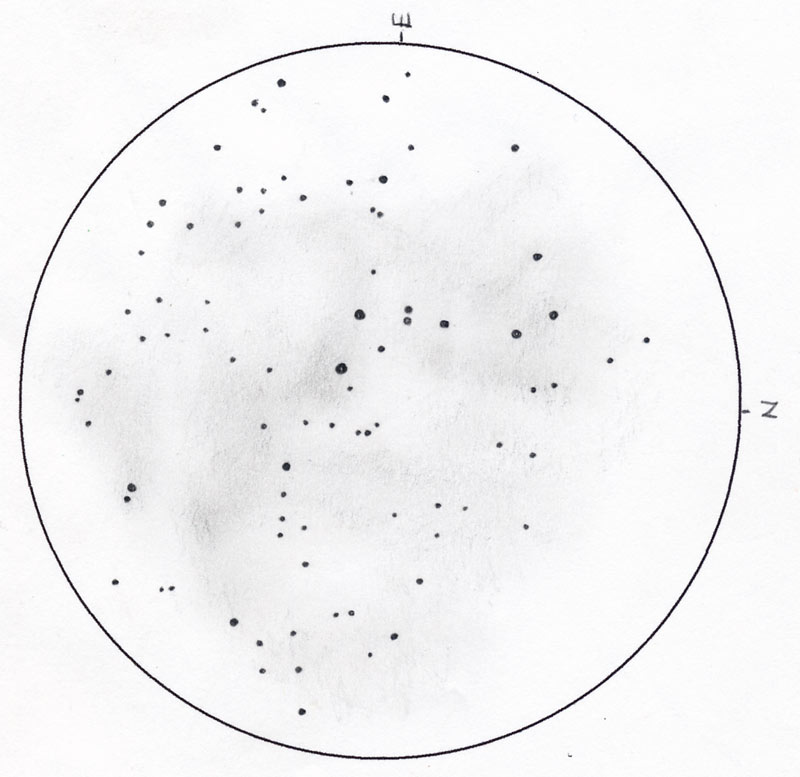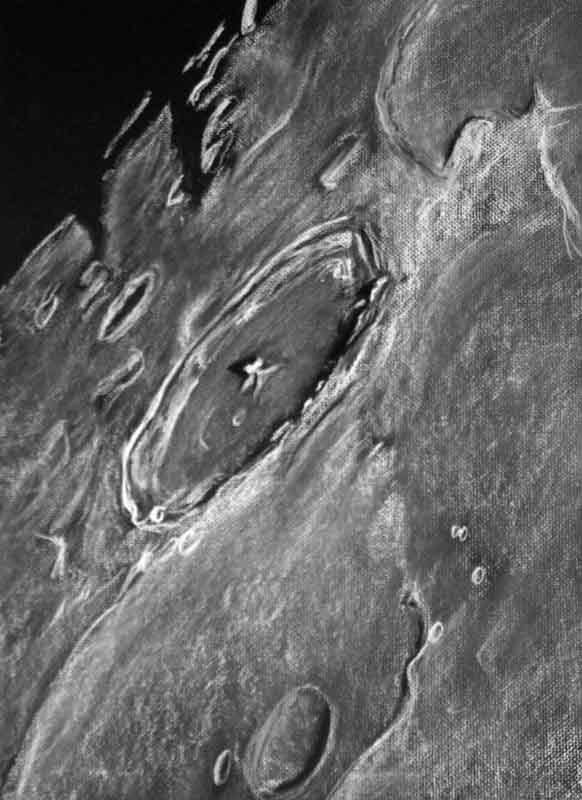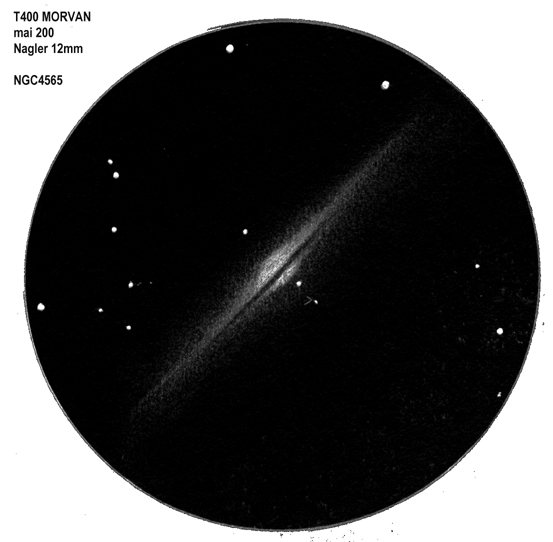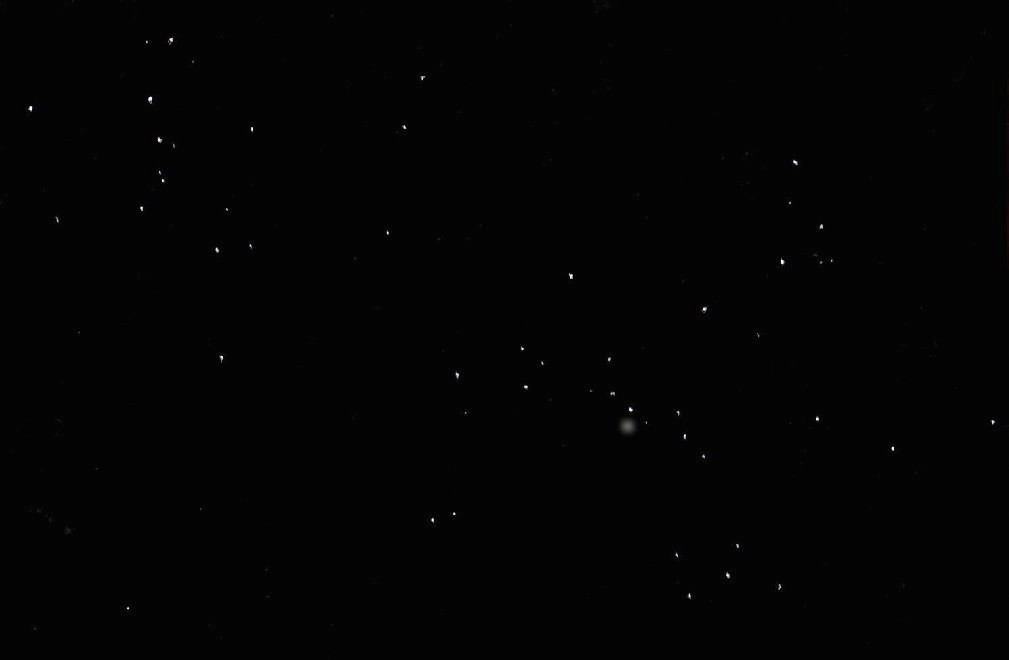Highlands Between Grimaldi and Mersenius
Sketch and Commentary by Frank McCabe
With the moon at nearly full phase, the sunrise illumination was approaching the western limb on this evening of observing and sketching. The region I focused in on includes the highlands just beyond the southwestern portion of Oceanus Procellarum between the Grimaldi basin and crater Mersenius. Both of these features are outside the boundaries of this sketch. Normally in this light I can hold the linear Rille Sirsalis in view continuously, but on this night it was visible only intermittently. Twin craters Sirsalis (43 km.) and Sirsalis A (49 km.) were clearly visible with their bright rims and dark shadowed floors. It is clear from some light reaching the floor of Sirsalis A that Siralis is the deeper of the two.
Lava flooded Billy, an Imbrium crater at 46 kilometers is separated from slightly younger crater Hansteen (45 km.) by Mons Hansteen. Beyond these features the remains of Siralis E a ghostly 72 kilometer crater remnant was visible in the morning sunlight.
Sketching:
For this sketch I used: black Strathmore 400 Artagain paper, 8”x 11”, white and black Conte’pastel pencils and a blending stump. Brightness was slightly decreased (-5) and contrast increased (+6) after scanning using Microsoft Office Picture Manager.
Telescope: 10 inch f/5.7 Dobsonian and 9mm eyepiece 161x
Date: 3-20-2008 4:50 – 6:00 UT
Temperature: -2°C (28°F)
clear, calm
Seeing: Antoniadi III
Co longitude: 66.9°
Lunation: 12.5 days
Illumination: 97.5 %
Phase: 18.4°
Observing Location: +41°37′ +87° 47′
Frank McCabe



